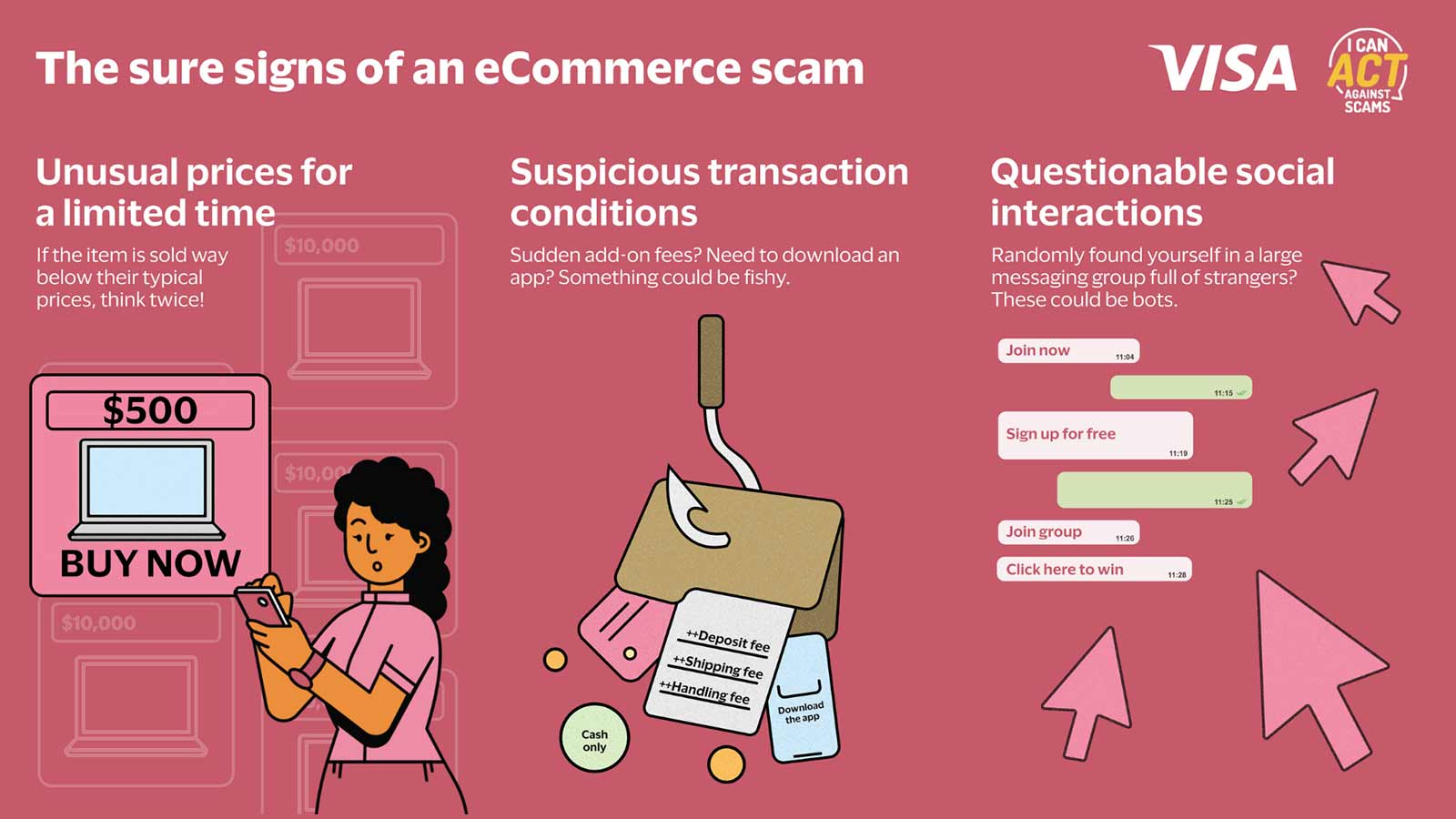
Over a billion Asian consumers shop on eCommerce websites. While most purchases are done without a hitch, the risk of fraud is still real. It only takes one instance for fraud to happen and ruin your shopping experience. In Asia Pacific, 3.6% of all accepted eCommerce orders are fraudulent[1] , as more bad actors find ways to exploit loopholes in digital systems.
Common types of eCommerce fraud
When it comes to fraud, it pays to be vigilant. Being aware of common fraud types can save you money and help you avoid a stressful online shopping experience.
For luxury items, brand impersonation is a big challenge. Fake websites that are made to look authentic can lure shoppers in with big flashing “Buy Now” messages. This sense of urgency can lead to impulsive buys, only for fraudsters to send fake products or worse, nothing at all.
In triangulation fraud, fraudsters pose as a bona fide online store on a trusted eCommerce platform. They take full payment from the customer, then buy the item from another store using a stolen credit card and send it to the customer. When the credit card owner discovers the fraud, they dispute the charge, and the original store that sold the item issues a refund.
Spotting a scam

eCommerce scams are often detectable and preventable. Follow this to shop more safely online:
- Do I trust the offer: Take the time to verify that a merchant is legitimate by checking through their stores. Some crucial points to note include store names and logos – if you spot grammatical errors or store names that deliberately resemble a brand name, reconsider if you should still make the purchase. Be cautious about checking out a good deal right away – if the price seems too good to be true, it often is. If you need more help to judge a product or offer, look out for customer reviews online or on the platform you are shopping on.
- Am I paying in a safe way: Legitimate websites and platforms usually accept payments via trusted payment gateways like Visa, which offer additional security capabilities that help to detect and pre-empt fraudulent transactions. Fraudsters will often ask you to complete a transaction outside of their website or platform, or ask for extra fees and upfront payments that are not typically required in an online purchase.
- Do I need more advice: Never be afraid to ask friends, families, or other customers for help. Many of them may have encountered the same item as you online, and their experience could help you make a better decision!
___________________________________________
¹ Visa, 2024 Global eCommerce Payments & Fraud Report, 25th Edition